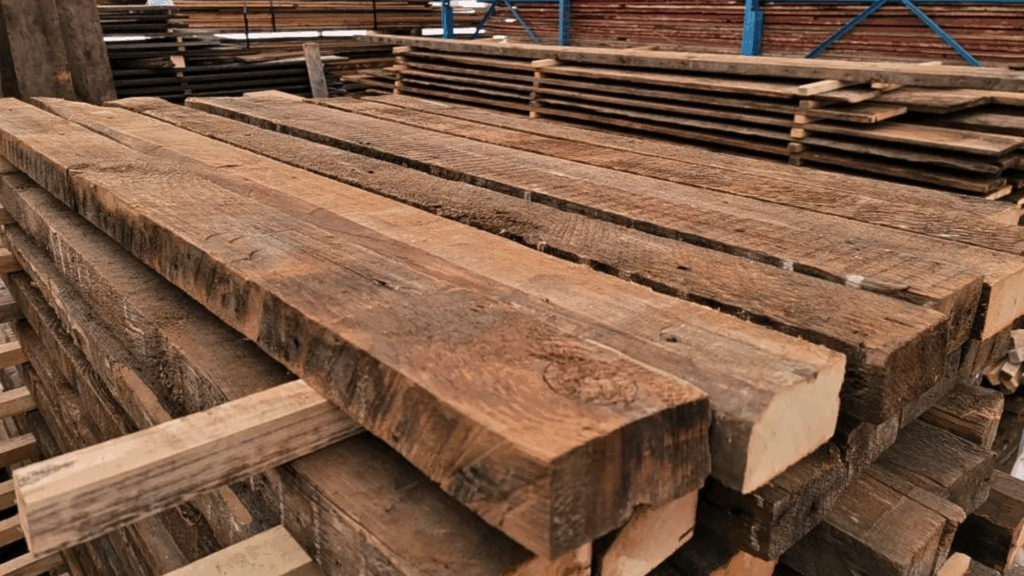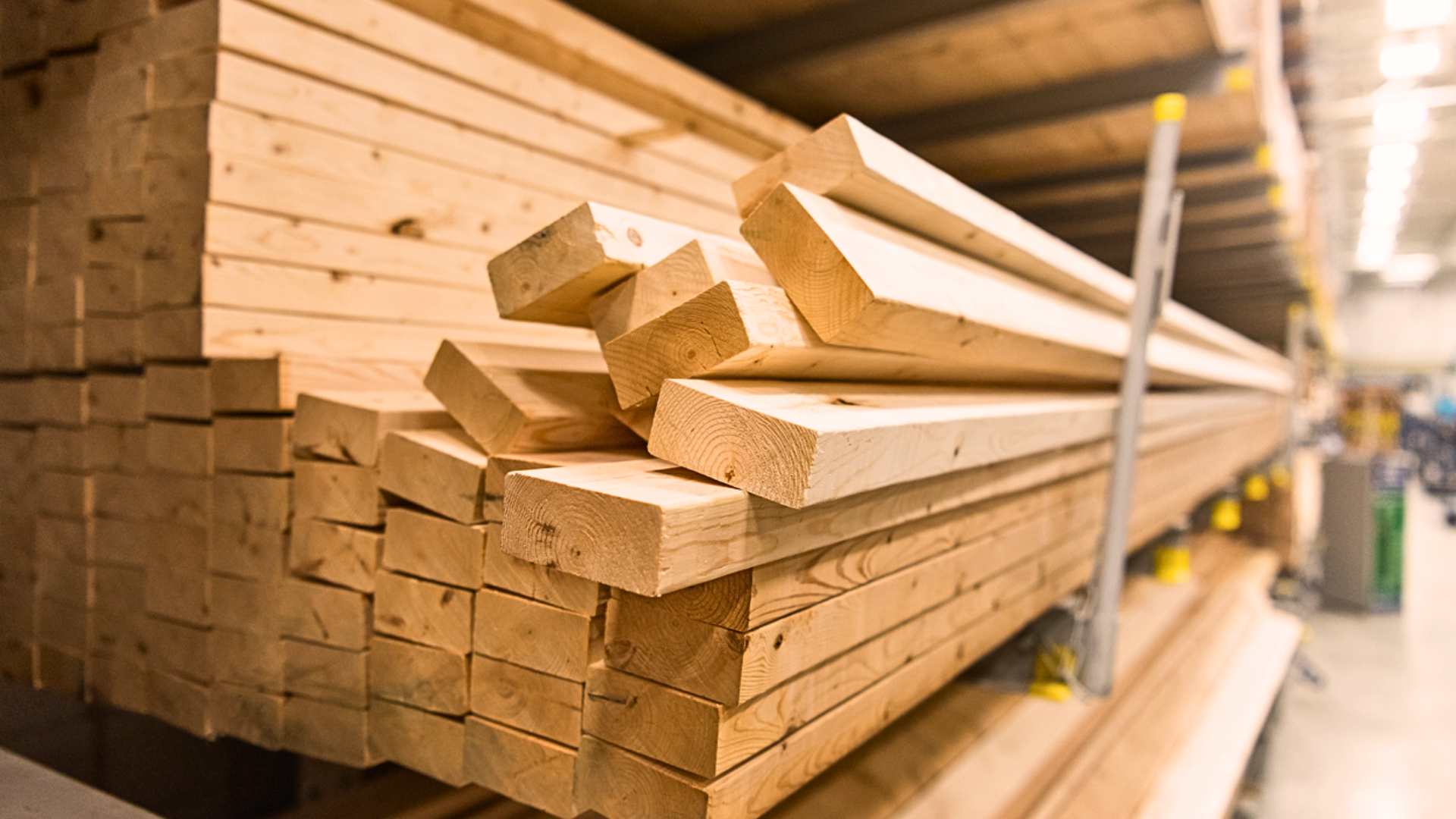Ever stood in the lumber aisle feeling lost among rows of wood, wondering what all those numbers mean? You’re not alone.
Lumber terminology can be confusing when you just want to build a simple shelf or finish a weekend project. Good news!
My guide breaks down everything about dimensional lumber in plain language anyone can understand.
In this blog, you’ll learn:
- Common sizes and their real measurements
- Different grades and what they mean for your project
- Best uses for dimensional lumber
I’ll clear up the confusion with straightforward facts so you can shop with confidence and choose the right wood for your project.
My easy-to-follow guide comes from years of helping both beginners and pros find exactly what they need.
What Is Dimensional Lumber?
Dimensional lumber is wood that has been cut and shaped to standard sizes.
Unlike trees in the forest or rough-cut timber, dimensional lumber comes ready to use in your projects. I like to think of it as the “grocery store” version of wood.
Just as you buy packaged food instead of harvesting crops, you buy dimensional lumber instead of processing raw trees.
When you walk through a home improvement store, those stacks of 2×4s, 2×6s, and 4×4s? That’s dimensional lumber.
This is what makes it special:
- It’s consistent: Each piece has been cut to match standard widths and thicknesses
- It’s processed: The rough edges have been smoothed away
- It’s dried: Most moisture has been removed to prevent warping
- It’s graded: Each piece is sorted by quality
Most homes in North America are built with dimensional lumber. It forms the hidden skeleton behind your walls, floors, and roof.
The name “dimensional” comes from how these pieces are sold by their dimensions – like 2×4 or 4×6. Though, as you now know, these numbers are just names, not exact measurements.
This size difference isn’t random or a trick. It’s a standard part of lumber production. Every builder knows that a 2×4 will actually measure 1½” × 3½”.
When you’re planning a project, you need to use the actual size in your calculations, not the nominal size on the price tag.
This small detail can make the difference between pieces that fit perfectly and ones that don’t.
A fresh-cut 2×4 might start close to its nominal size, but by the time it reaches you, it’s smaller.
Let’s see what you’re actually getting:
| Nominal Size | Actual Size |
|---|---|
| 1×1 | ¾” × ¾” |
| 1×2 | ¾” × 1½” |
| 1×3 | ¾” × 2½” |
| 1×4 | ¾” × 3½” |
| 1×6 | ¾” × 5½” |
| 1×8 | ¾” × 7¼” |
| 1×10 | ¾” × 9¼” |
| 1×12 | ¾” × 11¼” |
| 2×2 | 1½” × 1½” |
| 2×3 | 1½” × 2½” |
| 2×4 | 1½” × 3½” |
| 2×6 | 1½” × 5½” |
| 2×8 | 1½” × 7¼” |
| 2×10 | 1½” × 9¼” |
| 2×12 | 1½” × 11¼” |
Top Uses of Dimensional Lumber

1. Framing Walls
Dimensional lumber forms the backbone of most homes. Those 2×4s and 2×6s you see at construction sites create the wall structure that holds up your house.
When I visit building sites, I notice pros use these pieces to build the basic skeleton before adding drywall, insulation, and siding.
For interior walls, 2×4s work great, but exterior walls often need 2×6s for extra strength and insulation space.
2. Building Decks
Nothing beats a well-built wooden deck for an outdoor living space. You’ll find dimensional lumber in the posts, beams, joists, and surface boards of most decks.
The pressure-treated versions resist rot and insects, making them perfect for outdoor use.
Most deck frames use 2×8s or 2×10s for the main support structure, while 5/4×6 boards (about 1″ thick) make comfortable walking surfaces that shed water nicely.
3. Making Furniture
Solid wood furniture often starts with dimensional lumber. From dining tables to bed frames, these standard pieces help craftspeople create lasting items.
I’ve built several bookcases using 1×12s for shelves and 2×4s for the frame.
The smoother, higher-grade boards (Select or #1) work best for furniture since they have fewer knots and a nicer appearance.
Sand these pieces well, and nobody will know they came from the same place as construction lumber.
4. Shelving and Storage Units
Simple shelving projects are perfect for dimensional lumber. Whether you need garage storage or a bookcase, these standard boards make quick work of organization projects.
The 1×12 boards make excellent shelves for books, while 1×8s work well for lighter items.
When building shelves longer than three feet, consider using thicker boards or adding support brackets to prevent sagging under heavy items like books or tools.
5. DIY Outdoor Projects
From garden beds to fences, dimensional lumber shines in outdoor DIY projects. These readily available boards can be cut to any length and assembled with basic tools.
Raised garden beds often use 2×8s or 2×10s for the sides, while fence posts typically start with 4×4s set in concrete.
Always choose pressure-treated wood for ground contact or use cedar/redwood for naturally weather-resistant alternatives that look great in your yard.
Softwood vs. Hardwood: What’s Used in Dimensional Lumber?

When you walk down the lumber aisle, most of what you see is softwood, not hardwood. Let me break down the differences in this simple guide:
| Feature | Softwood | Hardwood |
|---|---|---|
| Common Trees | Pine, Spruce, Fir, Cedar | Oak, Maple, Cherry, Walnut |
| Standard Dimensional Lumber? | Yes – makes up 90% of dimensional lumber | Rarely sold in standard dimensions |
| Typical Cost | Less expensive | 2-5 times more expensive |
| Weight | Lighter | Heavier |
| Strength | Good for framing | Excellent for furniture |
| Ease of Cutting | Easier to cut, drill, and nail | Requires sharper tools and more skill |
| Common Uses | Framing, decks, and general construction | Furniture, cabinets, and flooring |
| How to Spot It | Usually lighter color, visible growth rings | Often darker, tighter grain patterns |
Why softwoods dominate dimensional lumber: Softwood trees grow faster, making them more plentiful and cheaper.
The wood is easier to cut, dry, and process into standard sizes. When you see those stacks of 2×4s at the store, they’re almost always pine, spruce, or fir.
I often tell beginners to start with softwood for practice projects. It’s more forgiving when you make mistakes, and you won’t break the bank learning.
Dimensional Lumber vs. Engineered Wood: Key Differences
When planning your next project, choosing between dimensional lumber and engineered wood products makes a big difference.
Let’s see a straightforward comparison that will help you decide easily:
| Feature | Dimensional Lumber | Engineered Wood |
|---|---|---|
| What is it? | Natural wood cut to standard sizes | Wood fibers, strands, or veneers glued together |
| Strength | Strong along the grain, it can warp | Consistent strength, resists warping |
| Size Limits | Limited by tree size | Can be made in large sheets/spans |
| Water Resistance | Varies by species, absorbs moisture | Better in some types (plywood), worse in others (MDF) |
| Cost | Generally less expensive | Usually more expensive |
| Look and Feel | Natural wood appearance | Manufactured appearance (except for veneers) |
| Ease of Use | Cuts easily, may split | Cuts cleanly, doesn’t split, can be heavy |
| Best Uses | Framing, visible wood features | Floors, roofs, cabinets, furniture |
I often use dimensional lumber for framing and visible parts of a project. Nothing looks better than real wood grain on a bookshelf or table.
But when I need a large, flat surface or extra strength, I turn to engineered woods like plywood or LVL beams.
These products won’t cup or twist like solid wood sometimes does.
When to choose dimensional lumber:
- When looks matter (visible shelves, furniture)
- For standard framing (walls, simple structures)
- When working with basic tools
- For smaller projects with a tight budget
Your local home center will stock both types, usually in different aisles. Pick based on your specific needs rather than assuming one is always better than the other.
Conclusion
Don’t let lumber labels stress you out.
Now you know the basics: dimensional lumber comes in standard sizes that don’t match their names, softwoods make up most of what you’ll find, and each size has specific uses.
Shopping gets much easier once you understand these simple facts.
You can confidently walk into any store and pick the right boards for your project. If you’re still unsure, I recommend visiting your local lumber yard.
Seeing and touching the different sizes in person helps more than any online guide. Most store staff are happy to answer questions for both beginners and pros.
Remember that every expert started where you are now.
The difference between good and great projects often comes down to choosing the right materials from the start.
With these key facts about dimensional lumber, you’re ready to build something amazing.

